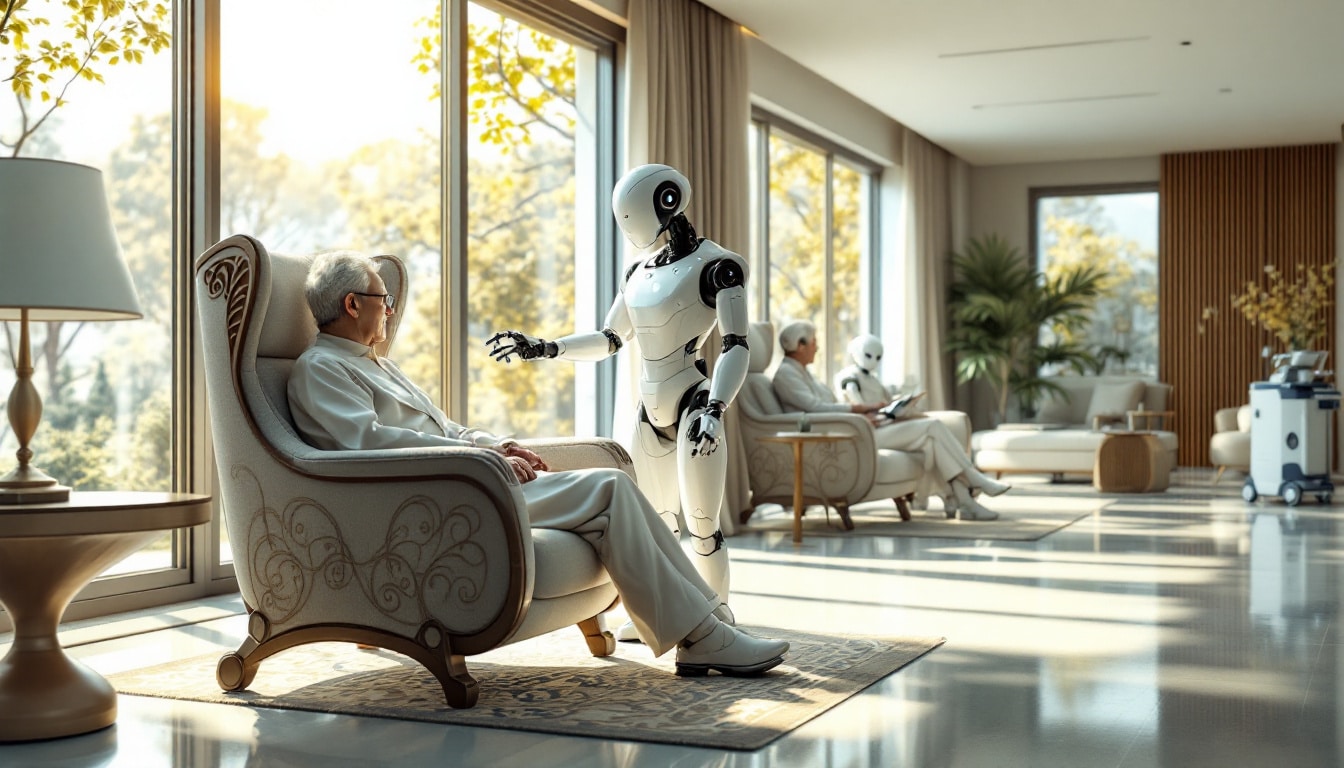Your online experience is at the heart of our concerns. We use cookies and data to ensure the quality of our services.
Every interaction is designed to offer you relevant and secure content. Our goal is to understand your needs in order to continuously improve our offerings.
By accepting all options, you allow us to develop new services and further personalize your browsing experience.
We collect data to monitor service interruptions and protect against spam, fraud, and abuse. The engagement of our audience and site statistics help us analyze the use of our services and enhance their quality. By choosing “Accept all,” we can also measure the effectiveness of advertisements and display personalized content according to your preferences. If you prefer “Reject all,” we will limit the use of cookies to essential functions, influenced by the content you view and your general location. For a tailored experience based on your age, we also adjust the content displayed according to these criteria. Select “More options” to view detailed information and manage your privacy settings at any time.

the context of the silver economy in China
In China, the silver economy is becoming increasingly central to the socio-economic landscape. With a rapidly aging population, the country faces major challenges related to elderly care. This demographic transition has led to a significant increase in demand for tailored services, paving the way for technological innovation in the care sector. The silver economy is not only limited to traditional health services but also extends to housing, leisure, and daily assistance.
The Chinese government, aware of these challenges, has implemented several initiatives to support this evolution. Policies encourage investment in cutting-edge technologies and promote collaboration between the public and private sectors. This dynamic has propelled China into a leadership position in developing innovative solutions for seniors, particularly through the integration of high-tech robots in care facilities and private homes.
Moreover, the silver economy has a positive impact on other economic sectors. For example, a recent study by the IMF revealed that the aging population brings unexpected economic benefits, such as the creation of new market niches and increasing demand for specialized products and services (source). This dynamic opens promising prospects for countries like Namibia, where the new silver economy represents a significant growth opportunity.
In parallel, events organized by the Fujian provincial government demonstrate a strong willingness to adapt and capitalize on this trend. These initiatives include partnerships with technology companies to develop tailored solutions addressing the specific needs of senior citizens in China (details).
Thus, the current context in China highlights a profound transformation of society and the economy, where technological innovation plays a key role in improving the quality of life for the elderly while stimulating overall economic growth.
why are high-tech robots crucial for elderly care?
High-tech robots have become indispensable in the elderly care sector in China for several fundamental reasons. First, the shortage of caregivers is a major problem. With a rapidly aging population, the demand for care far exceeds the available supply, making robots a viable solution to fill this gap. These machines can perform repetitive and physical tasks, allowing human caregivers to focus on more personal and emotional aspects of care.
Next, robots offer constant and uninterrupted assistance. Unlike human staff, they can operate 24 hours a day, ensuring continuous monitoring and immediate help when needed. For example, some robots are equipped with sophisticated sensors capable of detecting falls or anomalies in seniors’ behavior, thus alerting caregivers or relatives in real-time.
Furthermore, high-tech robots contribute to improving the quality of life for the elderly in China. They can provide companionship, reduce loneliness, and promote seniors’ autonomy. Some models are designed to interact socially, offering conversations, cognitive games, and even medication reminders. This regular interaction can have a positive impact on users’ mental and emotional health.
Robots can also play a crucial role in managing household tasks. They are capable of performing activities such as cleaning, meal preparation, or organizing medications, thus facilitating the daily lives of elderly individuals and allowing them to stay longer in their homes rather than in care facilities.
Finally, the integration of robots in elderly care contributes to the modernization and efficiency of the Chinese healthcare system. By automating certain functions, robots allow for more efficient resource allocation, reducing operational costs and improving the system’s responsiveness to the growing needs of the elderly population.
how are robotic technologies transforming the care sector?
The integration of robotic technologies in the care sector is profoundly revolutionizing the way services are provided to the elderly in China. These innovations not only improve the efficiency of the healthcare system but also personalize care according to individual seniors’ needs. Robots are equipped with advanced artificial intelligence capabilities that enable them to learn and adapt to each user’s preferences and habits.
For example, robots can track and analyze health data in real time, thereby providing valuable information to healthcare professionals to better understand each patient’s condition. This continuous monitoring can help detect early signs of health deterioration and intervene quickly, thus reducing the risks of serious complications.
Moreover, robotic technologies facilitate rehabilitation and physical activities for the elderly. Specialized robots can guide patients through adapted exercises, monitor their progress, and adjust rehabilitation programs based on their performance. This not only helps maintain mobility and muscle strength but also encourages seniors’ autonomy.
Robots are also used for training and supporting caregivers. By providing assistance tools and real-time information, they help healthcare professionals perform their tasks more efficiently and give more personalized attention to patients. This human-machine collaboration optimizes care processes and reduces caregivers’ workload.
Furthermore, robotic technologies allow for the creation of safer and more adaptive living environments for the elderly. Smart homes equipped with robots can automatically adjust lighting, temperature, and security according to residents’ needs, thus offering a more comfortable and secure living environment.
Technological innovation in the care sector, thanks to robots, not only transforms current practices but also paves the way for new methods of health service delivery, making elderly care more accessible, efficient, and humanized.
what are the most innovative high-tech robots in China for elderly care?
China is at the forefront of developing high-tech robots dedicated to elderly care, with several remarkable innovations transforming the sector. Among the most advanced robots is the “Yuji” model, designed to assist seniors in their daily activities. Yuji is equipped with sensors and artificial intelligence, allowing it to navigate autonomously in domestic environments, perform household tasks, and monitor residents’ health in real time.
Another notable example is the “Xiao Wei” robot, developed by a Chinese startup specializing in health technologies. Xiao Wei is designed to provide interactive companionship and emotional support to the elderly. With its advanced conversation capabilities and entertainment features, it helps reduce loneliness and stimulate seniors’ mental engagement. Additionally, Xiao Wei can remind users to take their medications, stay hydrated, and follow their health routines.
The “Hui Li” robot is also a key innovation in this field. Hui Li focuses on physical and cognitive rehabilitation, offering personalized programs based on each individual’s health condition. This robot uses machine learning algorithms to adapt exercises and activities based on users’ progress and specific needs, thus maximizing therapeutic benefits.
Furthermore, companies like DJI, known for their drones, have begun exploring the development of care robots, integrating advanced navigation technologies and intelligent communication systems. These robots can move smoothly in complex environments, providing safe and effective assistance to the elderly.
Finally, some research institutions in China are collaborating with the private sector to develop multifunctional robots capable of combining multiple services, such as health monitoring, domestic assistance, and entertainment provision. These all-in-one robots represent a significant advancement towards integrated and personalized care solutions.
These innovations demonstrate China’s commitment to leveraging robotic technologies to enhance the quality of life for the elderly while addressing the challenges posed by an aging population.
what are the challenges faced by the integration of robots in care?
Despite the many advantages that high-tech robots present in the field of elderly care, their integration in China is not without challenges. One of the main obstacles is the high cost of advanced robotic technologies. Although prices have decreased over time, acquiring and maintaining these robots represents a significant investment, especially for care facilities and middle-income families.
Another major challenge is the cultural and social acceptance of using robots for personal care. In China, as in many other cultures, human relationships play an essential role in the well-being of the elderly. The idea of entrusting part of these interactions to machines may provoke hesitations and reservations, necessitating ongoing awareness and education to change perceptions.
Moreover, the integration of robots in the care sector requires a robust technological infrastructure. This includes reliable internet connectivity, secure data management systems, and effective maintenance protocols. In some regions, particularly rural areas, these infrastructures may still be insufficient, limiting the effectiveness and accessibility of care robots.
Data security and privacy also constitute crucial issues. Robots collect and analyze vast amounts of personal and health information, raising concerns about the protection of sensitive data. It is essential to establish stringent security and privacy standards to ensure users’ information is protected from cyberattacks and unauthorized use.
Finally, there is a need for adequate training for users and caregivers. Seniors and healthcare professionals must be trained on how to use robots, which can require additional time and resources. The design of user interfaces must also be intuitive and accessible to minimize technological barriers and ensure smooth adoption.
Despite these challenges, ongoing advancements in technology and concerted efforts from various stakeholders allow for the gradual overcoming of these obstacles, paving the way for broader adoption of robots in elderly care in China.
what impact will this evolution have on the silver economy and Chinese society?
The rise of the silver economy through high-tech robots has profound repercussions for both the economy and Chinese society. Economically, the adoption of robots in the care sector creates new job opportunities in technology, maintenance, and software development. This dynamic also stimulates innovation and enhances the competitiveness of Chinese companies in the global health technology market.
Moreover, the use of robots allows for optimization of operational costs in care facilities. By automating certain tasks, facilities can reduce expenditures related to salaries and staff training, while improving the efficiency and quality of the services offered. This cost reduction can translate into more accessible and affordable care for a greater number of elderly individuals.
Socially, the integration of robots contributes to enhancing the well-being of seniors in China. By providing constant and personalized assistance, robots enable the elderly to live more autonomously and comfortably. This also alleviates the burden on families, often tasked with ensuring the care of their relatives, and improves seniors’ overall quality of life by promoting their independence and dignity.
Furthermore, this technological evolution strengthens intergenerational bonds by allowing families to stay connected with the elderly from a distance. Robots equipped with communication features facilitate interactions between generations, thus reinforcing the social and familial fabric.
However, this transformation also raises ethical and societal questions. Increased reliance on technology for personal care may raise concerns about losing the human aspect in caregiving interactions. It is therefore crucial to find a balance between utilizing robots and preserving human relationships, ensuring that care remains imbued with compassion and understanding.
Finally, the impact of this evolution on the Chinese silver economy is also visible in other related sectors, such as travel and hospitality. According to a study, the silver economy positively influences the demand for tailored services, thus stimulating growth and innovation in these industries.
In summary, the integration of high-tech robots in elderly care in China represents a significant vector for transformation, bringing economic and social benefits while posing new challenges to address for a society in full transition.







